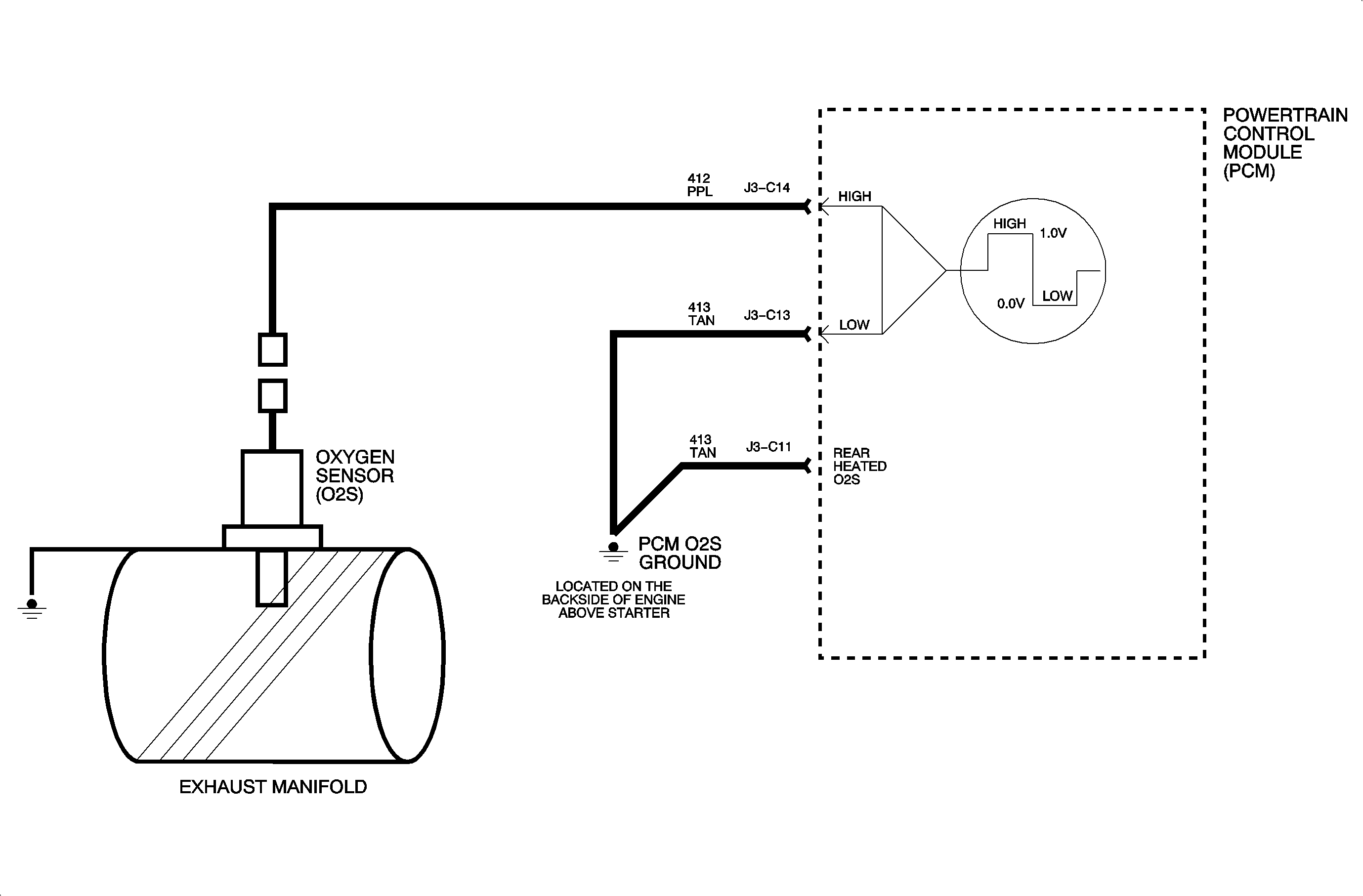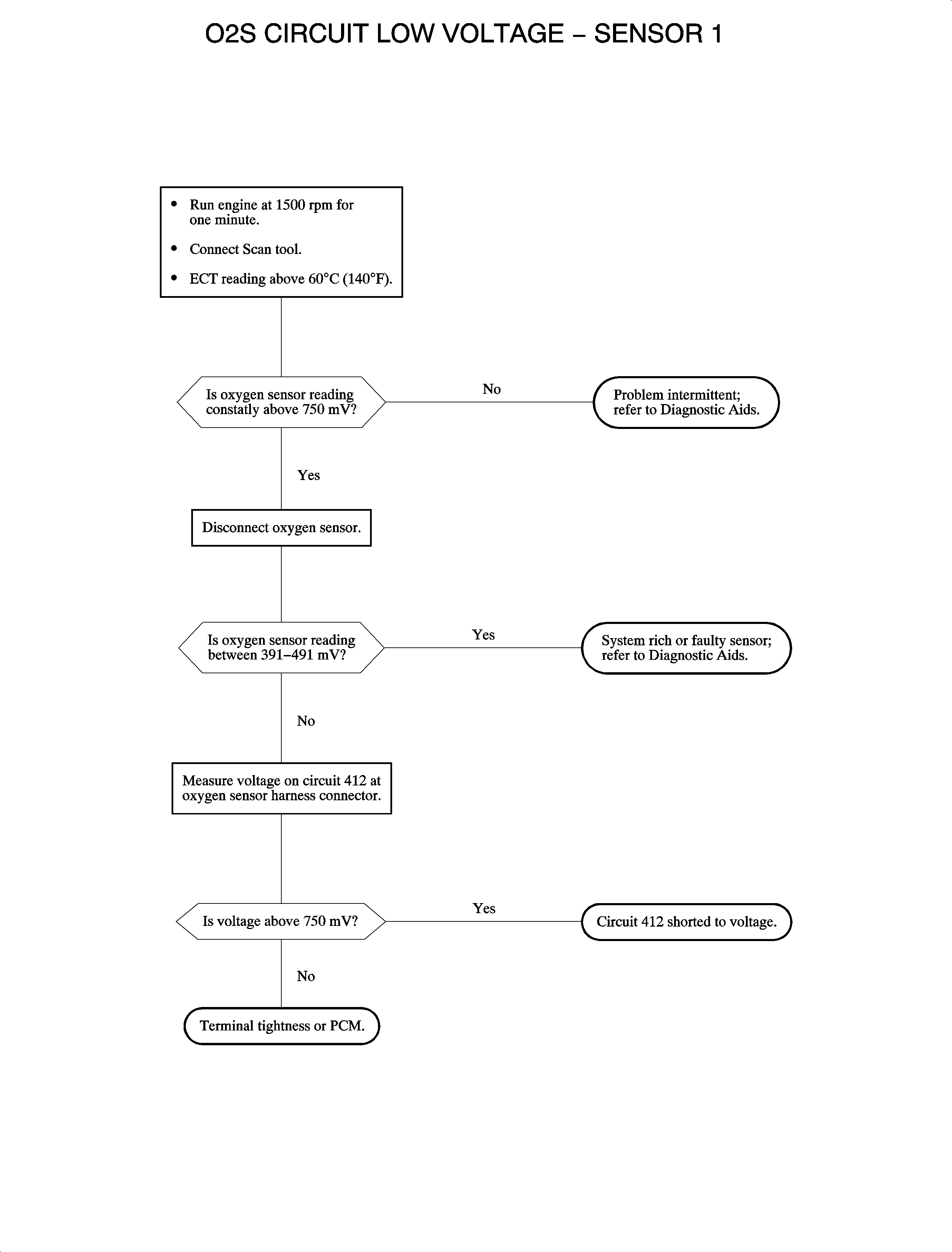Circuit Description

The oxygen sensor (O2S) consists of a zirconia electrolyte between 2 platinum
plates. When the sensor reaches approximately 318°C (600°F), it becomes an
electrical source that responds to the oxygen content in the exhaust. The PCM produces
a bias voltage of approximately 450 millivolts on the oxygen sensor circuit.
When the sensor is cold, its internal resistance is extremely high, therefore, the
PCM recognizes the bias as an open circuit. As the sensor warms up, the internal resistance
decreases. When the sensor reaches approximately 318°C (600°F), it starts
producing a voltage based on the oxygen content in the exhaust stream. This voltage
is used by the PCM to determine a rich or lean oxygen sensor signal and adjusts the
fuel mixture accordingly.
Conditions for Setting the DTC
Important: The O2S signal is continuously checked once
the above conditions are met.
DTC P0132 will set if the O2S voltage is greater than 787 mv for 90 seconds
OR
O2S voltage is greater than 587 mv in decel fuel cut-off (DFCO) mode
for 30 seconds when:
| • | The system is in closed loop mode. |
| • | No other engine sensor or misfire DTCs have been set. |
| • | The commanded A/F ratio is approximately 14.7:1. |
Diagnostic Aids
If the system is commanding lean, the engine is running rich, the oxygen sensor
signal is around 900 mV and short term fuel trim is in the 100s, the system
is nearing or at maximum correction.
Review the scan tool malfunction history decel rich fault. A total of 30 seconds
under deceleration per ignition cycle will set a decel rich fault to YES if a rich
condition occurs. Check the following for possible high O2S voltage:
| • | Oxygen sensor contamination |
| • | Engine oil contamination |
| • | Vacuum leak to map sensor |
| • | ECT sensor reading is colder than actual |



